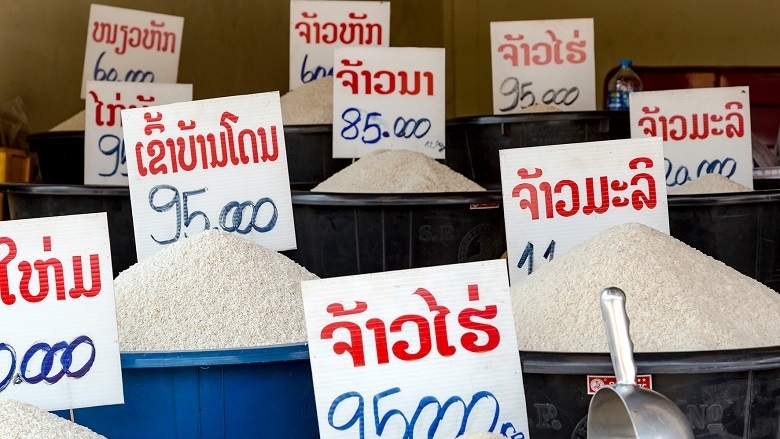Economic growth is projected to ease to 6.7% in 2018, down from 6.9% in 2017, but is still robust compared to regional peers.
- Growth in the power sector and the recent expansion of the manufacturing of electronic parts and components is expected to continue.
- After a fall last year, tourism is gradually recovering with the number of international tourists and non-ASEAN countries increasing in the first quarter of 2018.
- Mining output is expected to remain flat this year, but higher metal prices, compared to 2017, are likely to help exports.
- Expansion of job-creating sectors such as agriculture, manufacturing, and services in recent years, as well as inflows of remittances, are expected to continue to support poverty reduction.
- Inflation has started to pick up since late 2017, reaching almost 2% by April 2018, reflecting the increase in oil prices.
- Credit growth further moderated to 11% by the end of 2017, and the trend continued in the first quarter of 2018.
- The current account deficit narrowed slightly in 2017 due to strong exports of electricity, manufacturing and agricultural products, as well as higher mining exports, supported by improved copper prices. This trend in exports continued into 2018, but import is expected to grow as the construction of the Kunming-Singapore railway and oil prices pick up. Therefore, the current account deficit is projected to temporarily widen this year.
Despite improvements in macroeconomic management, risks remain.
- Total budget revenues increased by 5% in 2017 compared to a year ago - slightly short of the target and declining to 16.1% of GDP.
- Cuts in recurrent spending were not enough to offset the increase in capital spending, including for paying off arrears and public investment, mostly in the power sector. Total public spending increased to 21.4% of GDP in 2017, widening the deficit to 5.3% of GDP, up from 4.3% a year ago. Continued efforts to increase revenues and bolder steps on fiscal discipline will be needed to meet the 2018 target of 4.9%.
- Public debt reached around 61% of GDP in 2017. Debt is largely external and on less concessional terms, which makes Lao PDR’s public debt vulnerable to risks for exchange rate volatility and, to a lesser extent, from interest rate increase.
- Reserves remain low, with the ratio of reserves to foreign currency deposits at less than 30% and less than two months of imports. Greater flexibility in the exchange rate saw the kip depreciate against the dollar and the baht, narrowing the gap between the official and parallel market exchange rates.
- Parts of the financial sector remain weak, including with low capital buffers, weakening loan portfolios, and low profitability.
- The medium-term outlook remains broadly favorable, subject to improvement in fiscal and debt management, reforms in the business environment, and efforts to improve the viability of the power sector.
- Growth is projected to rebound to nearly 7% next year as large power projects start operation and non-resource sector opportunities, for example agriculture, agro-processing, tourism, trade, and manufacturing, open up in response to improvements in the business environment.
Going forward, policies should aim to reduce risks and implement business environment reforms for long-term growth.
- Taking bolder steps on the fiscal consolidation plan and fiscal discipline is an immediate priority. Improved tax administration, expanding the tax base, modernizing revenue collection methods and the ongoing revision of laws can contribute to higher revenue collection.
- Public investment should be carefully prioritized and scaled back, particularly in the power sector.
- Achieving stable and long-term growth will require vibrant private sector development, including addressing informality and constraints to doing business, as well as investing in human capital and infrastructure services.
The report also presents a special thematic section on rice value chain in Lao PDR
- Lao PDR’s agriculture sector is still largely subsistent, although recently there has been some commercialization and diversification. Rice remains the dominant crop, and glutinous rice constitutes about 70% of households’ caloric and protein intake.
- Farmers generally complain about low paddy prices and consumers about high rice prices; the price of rice in Vientiane is among the highest in Asia.
- High cost of paddy production and operational inefficiencies among multiple players in the value chain are responsible for high consumer rice prices.
- Addressing the structural constraints requires public investments in facilitating value chain linkages between farmers and millers, streamlining business regulations, enhancing access to finance, and improving public services needed to enhance rice commercialization.

